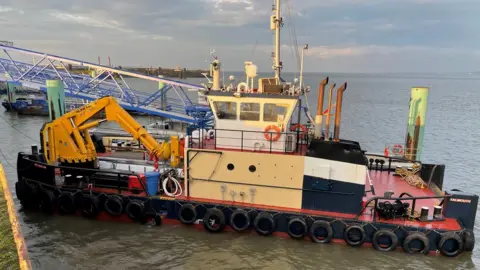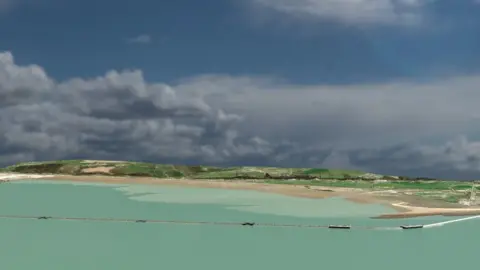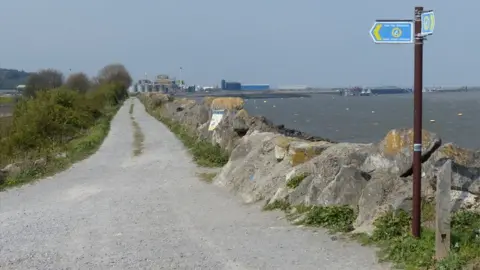Tidal energy: Plans for Mostyn lagoon take step forward
 Port of Mostyn
Port of MostynPlans to push forward a £590m tidal energy project are looking "encouraging" following results from a seabed survey, according to developers.
Mostyn SeaPower Ltd wants to build a tidal lagoon, using turbines on the Dee Estuary in Flintshire to generate electricity for homes and businesses.
Its findings show the seabed was "well-suited" to carry the lagoon wall.
At about four miles (6.5km) in length, it would run along the estuary between Mostyn and Point of Ayr.
The company, which is a subsidiary of the Port of Mostyn, hopes to submit a formal development application to officials by the end of 2022.
However a deeper seabed study has yet to be completed, along with an ecological survey.
If given the go-ahead, they say it could provide electricity for 82,000 homes while acting as flood defences along the A548 Coast Road.
"The biggest benefit of this project is that we will be producing clean, green energy to make a contribution towards tackling climate change," said boss Jim O'Toole.
"Tidal energy is an important part of the renewable energy mix."
 Port of Mostyn
Port of MostynMostyn SeaPower Ltd wants to install eight 16 megawatt (MW) turbines generating 298 gigawatt-hours (GWh) of electricity annually - one GWh is enough to power about one million homes for one hour.
The lagoon wall, built two metres above sea level, would have two sets of turbine houses with three sluice gates to control the volume of the water.
A road would also be built on top of the lagoon, along with a path accessible to the public.
Mr O'Toole, managing director of the Port of Mostyn, said he was hopeful work could start by 2023 if a development consent order (DCO) could be secured a year before.
 Mat Fascione | Geograph
Mat Fascione | GeographA geophysical survey was completed last year, paving the way for the latest study of the seabed which provided samples of the sediment from up to six metres below the surface.
"This will be followed by a final deeper sediment survey in the latter part of next year," said Mr O'Toole.
"The next stage will be to apply the information to inform the design of the lagoon wall so we're obviously very pleased that the signs, so far, are encouraging.
"Combined with the ongoing ecological surveys, these are very important milestones along the project's journey to commencement."
